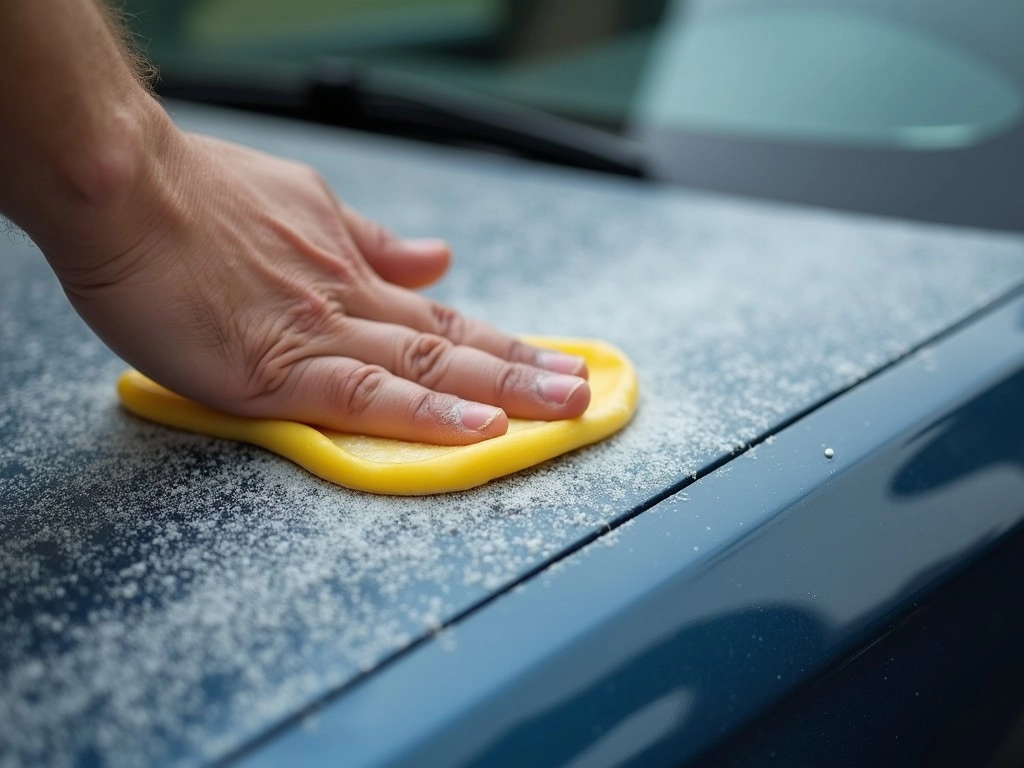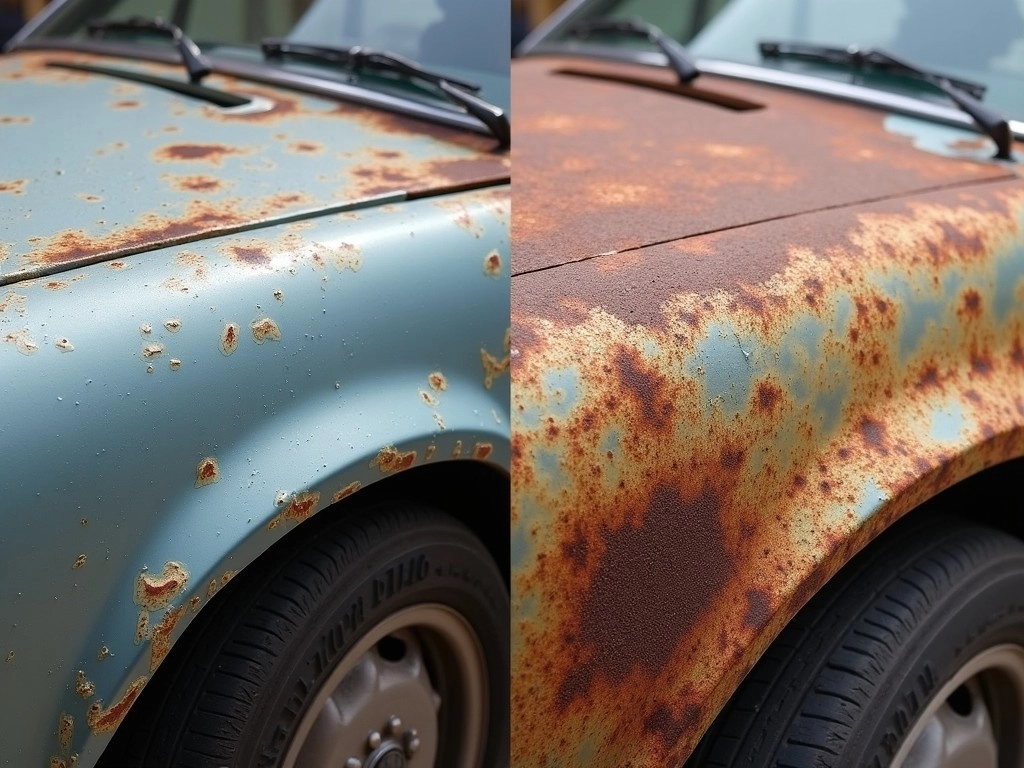The Ultimate Guide to Car Body Maintenance: Keep Your Ride Looking Sharp

If you’re anything like me, you probably take pride in your car’s appearance. There’s just something satisfying about driving a clean, shiny vehicle that turns heads on the street. But maintaining that showroom-fresh look isn’t always easy. That’s why I’ve put together this comprehensive guide on car body maintenance. Whether you’re a seasoned gearhead or a complete novice, you’ll find plenty of useful tips and tricks to keep your ride looking its best. So buckle up and let’s dive in!
- The Ultimate Guide to Car Body Maintenance: Keep Your Ride Looking Sharp
- Why Car Body Maintenance Matters
- The Basics of Car Body Care
- Washing Your Car
- Waxing for Protection
- Dealing with Common Car Body Issues
- Scratches and Swirl Marks
- Rust Spots
- Paint Fading
- Advanced Car Body Maintenance Techniques
- Clay Bar Treatment
- Paint Correction
- Protecting Your Car's Body from the Elements
- Sun Protection
- Winter Weather Care
- Avoiding Bird Droppings and Tree Sap
- DIY vs. Professional Car Body Maintenance
- Essential Tools for Car Body Maintenance
- The Impact of Regular Maintenance on Your Car's Value
- Common Mistakes to Avoid in Car Body Maintenance
- The Future of Car Body Maintenance
- Ceramic Coatings
- Graphene-infused Products
- Self-healing Paint
- Wrapping Up: Your Car Body Maintenance Action Plan
- Sources:
- FAQs
Why Car Body Maintenance Matters
Before we get into the nitty-gritty details, let’s talk about why car body maintenance is so important. Sure, it’s nice to have a car that looks good, but there’s more to it than just vanity. Proper maintenance can actually help protect your investment and save you money in the long run. Here’s why:
- Prevents rust and corrosion
- Maintains resale value
- Improves safety by maintaining visibility
Think of your car’s body as its skin. Just like how we take care of our own skin to stay healthy and look good, your car needs similar attention. Neglecting it can lead to all sorts of problems down the road (pun intended).
The Basics of Car Body Care
Alright, let’s start with the fundamentals. These are the things you should be doing regularly to keep your car’s body in tip-top shape:
Washing Your Car
This might seem obvious, but you’d be surprised how many people don’t wash their cars often enough. Regular washing removes dirt, grime, and other contaminants that can damage your car’s paint over time. Here’s a quick guide on how to wash your car properly:
- Rinse the car thoroughly to remove loose dirt
- Use a car-specific soap and a soft mitt or sponge
- Wash from top to bottom, rinsing your mitt frequently
- Rinse the car completely, making sure to remove all soap
- Dry with a microfiber towel or chamois to prevent water spots
Pro tip: Avoid washing your car in direct sunlight or when the body is hot. This can cause the soap to dry too quickly, leaving unsightly spots.
Waxing for Protection
After washing, it’s a good idea to apply a coat of wax. This adds an extra layer of protection to your car’s paint, helping to repel water and contaminants. Plus, it gives your car that gorgeous shine we all love. Here’s how to wax like a pro:
- Make sure the car is clean and dry
- Apply wax in small, circular motions
- Work in sections, allowing the wax to dry to a haze
- Buff off with a clean microfiber cloth
- Stand back and admire your handiwork!
Dealing with Common Car Body Issues
Even with regular washing and waxing, your car might still encounter some body issues. Let’s look at some common problems and how to address them:
Scratches and Swirl Marks
These pesky imperfections can really put a damper on your car’s appearance. Light scratches and swirl marks can often be removed with a good polish. For deeper scratches, you might need to use a scratch repair kit or seek professional help.
Rust Spots
Rust is like cancer for cars – it spreads if left untreated. If you spot any rust, it’s crucial to address it quickly. For small spots, you can try sanding down to bare metal, applying rust converter, and then touching up with paint. Larger rust issues might require professional bodywork.
Paint Fading
Over time, your car’s paint may start to fade, especially if it’s frequently exposed to sunlight. While you can’t completely prevent this, regular waxing can help slow down the process. For severely faded paint, a professional repaint might be necessary.

Advanced Car Body Maintenance Techniques
Ready to take your car body maintenance game to the next level? Let’s explore some more advanced techniques:
Clay Bar Treatment
Using a clay bar can remove contaminants that regular washing can’t. It’s like exfoliating your car’s paint, leaving it incredibly smooth. Here’s how to do it:
- Wash and dry your car
- Knead the clay bar until it’s pliable
- Spray a lubricant on a small section of the car
- Gently rub the clay bar over the lubricated area
- Wipe clean with a microfiber towel
- Repeat over the entire car
Paint Correction
Paint correction involves using a machine polisher to remove imperfections in your car’s clear coat. It’s a bit more involved than regular polishing, but the results can be spectacular. If you’re not confident in your skills, it might be best to leave this to the professionals.
Protecting Your Car’s Body from the Elements
Mother Nature can be tough on your car’s body. Here are some tips to protect it from various environmental factors:
Sun Protection
The sun’s UV rays can wreak havoc on your car’s paint. Whenever possible, park in the shade or use a car cover. You can also apply a UV-resistant clear coat or ceramic coating for added protection.
Winter Weather Care
Winter can be particularly harsh on your car’s body. Salt and other de-icing chemicals can accelerate rust and corrosion. Wash your car frequently during winter months, paying special attention to the undercarriage.
Avoiding Bird Droppings and Tree Sap
Both of these can etch your car’s paint if left too long. If you spot either on your car, clean it off as soon as possible. A quick detailer spray and a microfiber cloth can work wonders in a pinch.

DIY vs. Professional Car Body Maintenance
While there’s a lot you can do yourself to maintain your car’s body, sometimes it’s worth calling in the pros. Let’s compare DIY and professional services:
| Task | DIY | Professional |
|---|---|---|
| Washing | Easy, inexpensive | Convenient, thorough |
| Waxing | Time-consuming but rewarding | Quick, high-quality results |
| Paint correction | Requires skill and equipment | Expertise ensures best results |
| Rust repair | Possible for small spots | Necessary for extensive damage |
Essential Tools for Car Body Maintenance
Having the right tools can make car body maintenance much easier. Here’s a list of essentials:
- Microfiber towels
- Car wash mitt
- Car-specific soap
- Wax or sealant
- Clay bar kit
- Detailing spray
- Wheel brush
- Tire shine
Investing in quality tools can save you time and help you achieve better results. Trust me, your car will thank you!
The Impact of Regular Maintenance on Your Car’s Value
Let’s talk money. Regular car body maintenance isn’t just about looking good – it can actually help maintain your car’s value. A well-maintained exterior suggests that the car has been cared for overall, which can be a big selling point if you ever decide to part ways with your ride.
Consider this: according to some estimates, a car in excellent condition can be worth up to 15-20% more than the same model in fair condition. That’s a significant difference that could translate to thousands of dollars in your pocket!
| Condition | Potential Value Increase |
|---|---|
| Fair to Good | 5-10% |
| Good to Excellent | 10-15% |
| Fair to Excellent | 15-20% |
Common Mistakes to Avoid in Car Body Maintenance
Even with the best intentions, it’s easy to make mistakes when caring for your car’s body. Here are some common pitfalls to avoid:
- Using household cleaners on your car’s paint
- Washing in circular motions (this can cause swirl marks)
- Neglecting to wash your car in winter
- Using a dirty wash mitt or towel
- Waxing in direct sunlight
Remember, when it comes to car body maintenance, sometimes less is more. Overwashing or using harsh products can do more harm than good.
The Future of Car Body Maintenance
As technology advances, so does the world of car care. New products and techniques are constantly emerging to make car body maintenance easier and more effective. Here are some exciting developments to keep an eye on:
Ceramic Coatings
These long-lasting protective coatings are becoming increasingly popular. They provide superior protection against UV rays, chemical stains, and light scratches.
Graphene-infused Products
Graphene is being incorporated into car care products due to its incredible strength and water-repelling properties. Expect to see more graphene-based waxes and coatings in the future.
Self-healing Paint
Some car manufacturers are experimenting with self-healing paint that can repair minor scratches on its own. While still in its early stages, this technology could revolutionize car body care.
As exciting as these advancements are, remember that the basics of car body maintenance – regular washing, waxing, and addressing issues promptly – will always be important.
Wrapping Up: Your Car Body Maintenance Action Plan
We’ve covered a lot of ground in this guide to car body maintenance. Let’s recap with a simple action plan you can follow to keep your ride looking its best:
- Wash your car regularly (at least every two weeks)
- Apply wax or sealant every 3-4 months
- Address any scratches or rust spots promptly
- Protect your car from the elements when possible
- Consider professional detailing once a year
Remember, consistency is key when it comes to car body care. A little effort on a regular basis can go a long way in maintaining your car’s appearance and value.
Caring for your car’s body doesn’t have to be a chore. With the right knowledge and tools, it can be a rewarding experience that keeps your car looking great for years to come. So why not get out there and give your ride some TLC? Your car (and your wallet) will thank you!
For more tips on car maintenance, check out this helpful video:
Sources:
FAQs
Q: How often should I wash my car?
A: It’s generally recommended to wash your car every two weeks, but this can vary depending on your environment and how often you drive.
Q: Can I use dish soap to wash my car?
A: It’s best to avoid dish soap as it can strip away your car’s wax protection. Use a car-specific soap instead.
Q: How can I prevent rust on my car?
A: Regular washing, especially in winter, can help prevent rust. Also, address any paint chips promptly to prevent rust from forming.
Q: Is it worth getting my car professionally detailed?
A: Professional detailing can be worth it, especially for deep cleaning or paint correction. Consider getting it done once a year.
Q: How long does car wax last?
A: Most car waxes last about 3-4 months, but this can vary based on the product and your car’s exposure to the elements.
